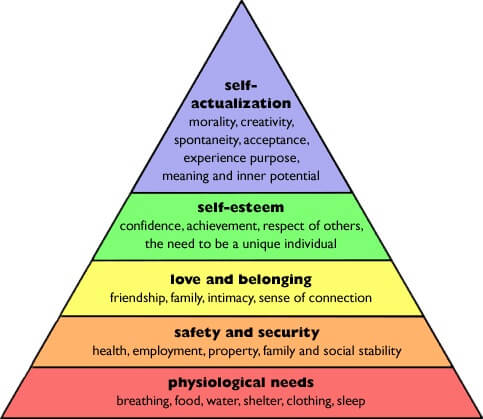We’re all subject to doubt. Whether it’s asking Lindsey W. to the senior prom or preparing for our first marathon, self-doubt is a staple of the human experience.
But when we face doubt within the context of our business, the implications become a bit more… severe. I can avoid going to prom and I might miss out on a memory, but defaulting on my mortgage because I lost all my clients is an entirely different beast.
When fear runs our business, our primary concern is to avoid calamity.
After losing a client, I used to go into hyperdrive and overwork myself to avoid losing yet another income stream. Or when I’d have a proposal be rejected, I’d start underpricing myself to avoid future rejection.
This is the season of my life where I ran a “Minimum Viable Business”, where my focus was on simply surviving, rather than growing.
“Yeah, OK, but that’s what matters, Brennan. I need to pay my bills.”
And I understand that. After all, in order to achieve self-actualization, you first need to cover your safety and security needs.

Maslow’s hierarchy of needs
How I escaped my Minimum Viable Business
But I wasn’t happy. How could I be? I knew I was losing money, and I knew my health and relationships would suffer due to my work habits.
I used to think that all I needed was that ONE client who would turn everything around. Once I got that client, I’d have a project waiting list that stretched through the end of the century and I’d be set for life.
But this is foolish. Nowadays, this reminds me of product founders who convince themselves that they just need to be mentioned on TechCrunch or have a celebrity tweet about them, and then — bang! — hockey stick growth.
What isn’t foolish, though, is to stop letting emotion run your business (“I just need X and everything will be OK”), and start running a data-driven business.
Journaling changed everything
Journaling each week is, by far, the single biggest breakthrough I’ve made in overcoming my own self doubt.
Each Friday, I sit down and note…
- What did I do this week?
- What were the lows (what didn’t work)?
- What were the highs (what worked?)
- How much money did I make?
Keeping a business journal forces me to distance myself from raw and immediate emotion — the rejection I felt from that last proposal, or the anger from that client who screwed me over. Instead, my focus is on concrete data and metrics.
My goal is to maintain forward momentum, or to always be moving “up and to the right”. The emotional side of me wants immediate hockey stick growth, but the data analyst in me only cares about macro trends.

Start today by creating a Lead Journal
One immediate change you can make right now is to create a Lead Journal. When you begin to take a data-first approach to your freelancing business, you’ll begin to see each lead as an experiment, subject to the laws of averages.
Whenever you get a new lead, track details about who they are, what you proposed (that is, your “product”), what the details were (the “features”, e.g. your rate), and the results.
Once you have enough data, you can normalize the findings and discover what people are responding positively to and what’s being rejected, and make changes based off of data — not speculation.
For the last few years, I’ve made data and trends the bedrock of my business. And whenever I begin to doubt myself (which, literally, happens just about every week) I look to the past. I look at the small and incremental wins in my business, and see that nothing can keep me from pushing forward.